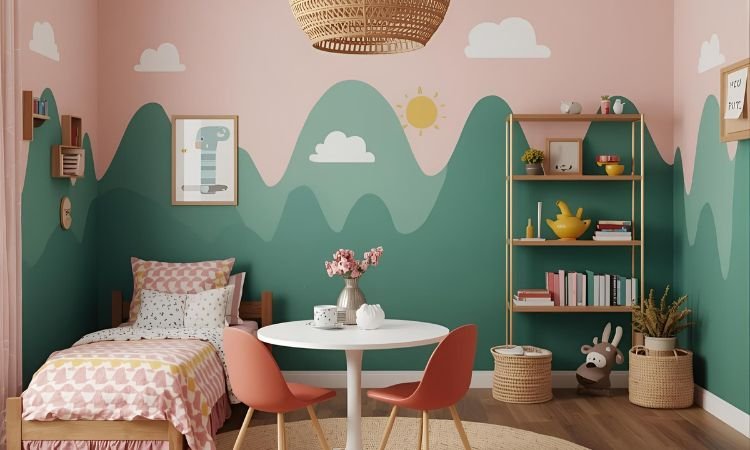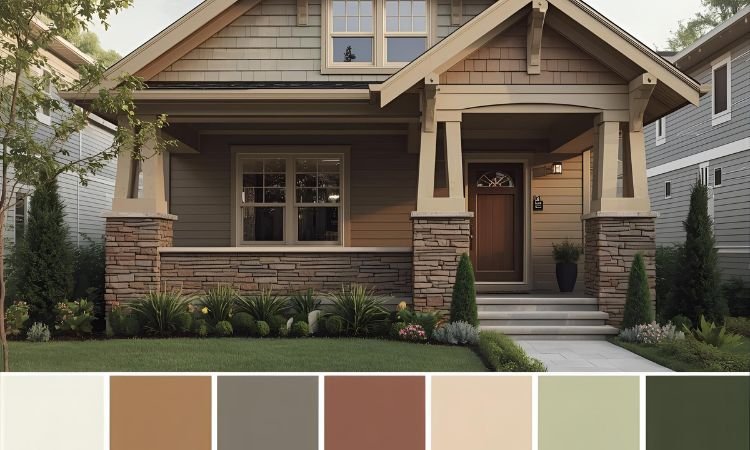Turn Fantasy into Reality with These Toca Boca Kids Room Ideas

Designing a kid’s room often means navigating a tightrope between practicality and imagination. Without a clear vision for creative play, rooms can become generic, fail to inspire, or quickly lose their appeal as children grow. The challenge lies in crafting a space that feels magical, adaptable, and genuinely reflective of a child’s vibrant inner world, much like the dynamic and customizable environments found in Toca Boca games.
We’re covering 12 imaginative Toca Boca kids’ room ideas, featuring everything from customizable zones to playful color schemes and unique furniture pairings. These selections prioritize interactive elements, adaptability, and a blend of vibrant aesthetics with practical living, proving that a child’s room can be both wildly creative and perfectly functional.
Get ready to discover imaginative ways to bring the spirit of Toca Boca to life in your child’s personal sanctuary.
Toca Boca Design Elements
- Vibrant, Mismatched Colors: Embrace bold, contrasting colors and unexpected pairings that reflect playful energy. It’s like a joyful rainbow where every shade is welcome. A diverse palette sparks visual interest and fun.
- Modular & Customizable Furniture: Choose pieces that can be easily moved, reconfigured, or personalized with stickers and accessories. It’s like building blocks for decor where flexibility is key. Adaptable furniture supports evolving play scenarios.
- Quirky & Whimsical Details: Add unexpected elements like oversized props, unique art, or playful textures that spark curiosity. It’s like a treasure hunt where every corner holds a surprise. Unique details fuel imaginative narratives.
- Defined Play Zones: Create distinct areas for different activities—a dress-up corner, an art station, a reading nook—without rigid barriers. It’s like a mini-city where each district has a purpose. Clear zones encourage varied forms of play.
12 Toca Boca Kids Room Ideas
Discover imaginative ways to design rooms that capture the creative and playful spirit of Toca Boca.
1. Color Block Walls
Paint distinct sections of a wall or even different walls in bold, contrasting colors that don’t traditionally “match,” creating a dynamic and playful backdrop. This vibrant approach mimics Toca Boca’s use of diverse palettes and adds immediate visual interest. It’s like an abstract painting where colors collide joyfully.
Consider using unexpected combinations like bright teal with sunny yellow, or soft lavender with a pop of lime green. Ensure the lines are crisp for a polished yet whimsical effect.
2. Mix-and-Match Furniture Styles
Combine furniture pieces from different eras, styles, or even colors—think a modern bed with a vintage dresser and a colorful, unconventional chair. This eclectic approach mirrors the diverse, often quirky items found in Toca Boca scenes. It’s like an assembled collection where uniqueness is celebrated.
The goal is a curated, non-uniform look that feels personal and adventurous rather than perfectly matched. Focus on pieces that are sturdy and functional despite their varied aesthetics.
3. DIY Prop Wall Art
Create oversized, whimsical wall art using simple materials like cardboard cutouts, felt, or painted plywood, depicting Toca Boca-style characters, food items, or abstract shapes. This adds a playful, hand-crafted touch that’s easily changeable. It’s like a giant sticker book where imagination decorates the walls.
Involve your child in the creation process for added fun and personalization. These DIY elements are less permanent than murals, allowing for easy updates.
4. Modular Storage Cubbies
Utilize open modular cubby systems that can be rearranged, stacked, or fitted with colorful bins and baskets. This allows for flexible storage that adapts to changing toy collections and can define different play zones. It’s like building blocks for organization where adaptability is key.
Choose brightly colored bins or paint the inside of cubbies in contrasting shades to add visual pop. The open nature of cubbies encourages easy access and cleanup.
5. Playful Textile Layers
Layer rugs with different patterns, textures, and colors, and combine bedding with contrasting prints and bold throws. This creates a rich, tactile environment that invites sensory exploration and cozy play. It’s like a soft collage where comfort meets visual excitement.
Don’t shy away from mixing stripes with polka dots, or geometric patterns with whimsical prints. Ensure all textiles are durable and easy to clean, given the active nature of a child’s room.
6. Interactive Pegboard Display
Install a large pegboard on a wall, painted in a bright color, and use it to hang a variety of items like art supplies, small toys, dress-up accessories, or even framed pictures. This encourages organized play and easy access to creative tools. It’s like a customizable stage where props are always ready.
The pegboard’s versatility allows for endless rearrangement, keeping the display fresh and functional. It transforms storage into an interactive design element.
7. Themed Play Zones with Minimal Barriers
Designate specific areas for different types of play—like a “kitchen” corner with play food, a “hospital” with doctor kits, or a “school” area with a small desk—using rugs or furniture placement rather than solid walls. This encourages imaginative scenarios without making the room feel confined. It’s like a miniature city layout where different neighborhoods coexist.
Use a simple curtain to pull across a zone for temporary privacy or to signal a shift in activity. This keeps the space open while providing structure for play.
8. Whimsical Lighting Fixtures
Choose lighting fixtures that are unusual, colorful, or shaped like fun objects, such as cloud lamps, rocket pendants, or animal-themed sconces. This adds personality and a touch of magic to the room’s overall ambiance. It’s like a glowing art piece where light adds character.
Layer different types of lighting—overhead, task, and decorative—to create varied moods and illuminate specific play or reading areas effectively.
9. Graphic Wall Decals or Murals
Apply large, bold wall decals depicting quirky characters, oversized objects (like giant donuts), or abstract geometric patterns. Alternatively, consider a vibrant, hand-painted mural with a Toca Boca-esque style. This transforms plain walls into engaging backdrops for play. It’s like a giant comic strip where the room is the setting.
Removable decals offer flexibility for changing themes as your child grows, while murals provide a more permanent artistic statement.
10. Upcycled & Repurposed Furniture
Give old furniture new life with bright paint, fun stencils, or new hardware, repurposing items like old crates into shelves or a vintage cabinet into a toy chest. This eco-friendly approach adds unique character and a charming, “found” aesthetic. It’s like a creative workshop where discarded items find new purpose.
Ensure all upcycled pieces are thoroughly cleaned, sanded, and painted with child-safe, non-toxic finishes. This adds a personal touch that store-bought furniture often lacks.
11. Bold, Patterned Rugs
Anchor the room with one or more large rugs featuring vibrant colors, geometric patterns, or playful illustrations. This adds a soft texture underfoot, defines play areas, and introduces a strong design element. It’s like a soft canvas where color and pattern ground the room.
Layering rugs of different sizes and shapes can add further visual interest and tactile richness. Choose rugs that are durable and easy to clean, given their prominent role in a child’s play space.
12. “Dress-Up” or Costume Corner
Dedicate a small corner with a child-sized wardrobe, a hanging rail for costumes, a full-length mirror, and perhaps a trunk for props. This encourages imaginative role-play and self-expression. It’s like a mini-theater where every day is a dress rehearsal.
Ensure the mirror is shatter-proof and securely mounted. Easy access to costumes and accessories promotes spontaneous imaginative play throughout the day.
Designing for Playful Growth
- Encourage Customization: Provide children with child-safe stickers, removable wall decals, or chalk walls. This allows them to personalize their space. It’s like a personal canvas where their vision takes shape.
- Rotate Toys and Books: Regularly swap out toys and books to keep the room feeling fresh and to prevent clutter. This maintains interest and sparks new play scenarios. It’s like a revolving exhibition where new discoveries are always possible.
- Focus on Open-Ended Play: Design areas that inspire imaginative use rather than prescribing specific activities. This encourages creativity and adaptability. It’s like a blank slate where possibilities are endless.
Frequently Asked Questions About Kids’ Room Design
How do I choose a color scheme that won’t quickly feel dated?
To choose a color scheme that has longevity, start with a neutral base for walls and larger furniture pieces (like white, light gray, or a soft beige). Then, introduce vibrant, playful colors through easily changeable elements like bedding, rugs, curtains, accessories, and wall art. This allows you to update the room’s feel as your child grows without expensive repainting.
Consider a palette that mixes primary and secondary colors in a balanced way, rather than focusing too heavily on just one trend, for a more timeless appeal.
What are some eco-friendly or sustainable options for kids’ room furniture?
For eco-friendly kids’ room furniture, look for pieces made from sustainably harvested solid wood (FSC certified), bamboo, or recycled materials. Opt for furniture with low VOC (volatile organic compound) finishes, which are better for indoor air quality.
Consider upcycling or repurposing existing furniture by giving it a fresh coat of non-toxic paint. Choosing durable, adaptable pieces that can grow with your child or be easily passed down also reduces waste.
How can I make a kids’ room stimulating but not overwhelming?
To make a kids’ room stimulating without being overwhelming, balance vibrant elements with calming, neutral spaces. Use bold colors and patterns in specific zones (like a play corner) or on easily changeable items (like rugs or curtains), while keeping main walls serene.
Ensure there is sufficient organized storage to minimize clutter, as too many visible toys can create visual noise. Introduce a variety of textures and interactive elements, but provide clear pathways and open floor space for a sense of order.
What age range is Toca Boca style design best suited for?
Toca Boca style design, with its emphasis on bright colors, playful customization, and imaginative play, is exceptionally well-suited for a broad age range, typically from toddlers through early elementary school (ages 2-8). The flexibility of the design, using modular elements and easily changeable accessories, means it can evolve as a child’s interests shift.
The focus on open-ended play and creativity resonates strongly with children who enjoy role-playing and constructing their own narratives, making it adaptable even for pre-teens with a whimsical spirit.
What are some non-traditional storage ideas for toys?
Beyond standard bins and shelves, non-traditional storage ideas for toys include using clear shoe organizers mounted on the back of doors for small figures, oversized floor cushions with hidden storage, or repurposing vintage suitcases or trunks as decorative toy chests.
Consider a fabric wall organizer with multiple pockets, a hanging closet system for plush toys, or even a creative display with peg rails and colorful buckets for arts and crafts supplies. The goal is to make storage visually appealing and easy for kids to use.
Crafting a Canvas for Childhood
Designing a Toca Boca-inspired kids’ room is an opportunity to create more than just a bedroom; it’s about crafting a dynamic canvas for childhood. By embracing vibrant colors, flexible furniture, and whimsical details, you build a space that constantly invites creativity, storytelling, and imaginative exploration. Each thoughtful choice transforms their personal sanctuary into a playful world where every day is a new adventure waiting to unfold.
Begin by identifying the key elements of Toca Boca’s aesthetic that resonate with your child, then select ideas that blend playful inspiration with practical living. Remember, their room is not just where they sleep, but where their biggest dreams come to life.
Which Toca Boca-inspired idea will you bring into your child’s room first? Share your favorite playful concepts below!






